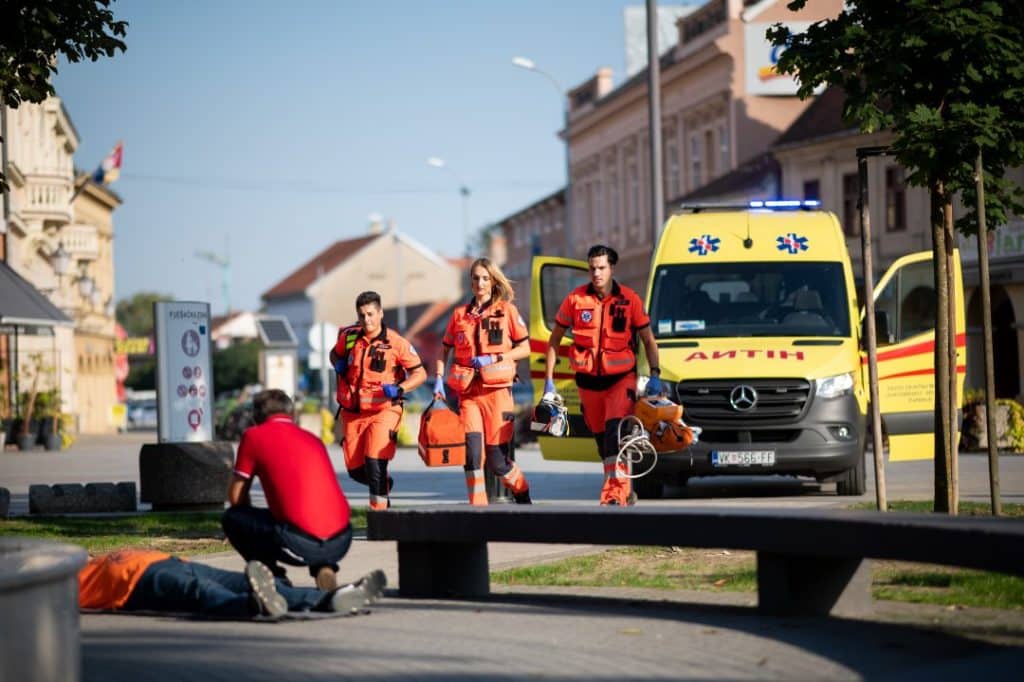When summer rolls around, many people head for remote destinations: lush forests, secluded lakes, mountain trails, and backcountry campsites. But when fun meets unexpected health emergencies in areas far from hospitals, paramedics step in as literal lifesavers. Maxim Gorin, a seasoned expert in emergency medical services, sheds light on how paramedics manage medical crises in isolated, hard-to-reach summer hotspots. As more individuals seek peace in nature, the need for rapid, well-coordinated emergency care in these locations has never been more essential.
Why Remote Areas Are High-Risk During Summer
With more people venturing into national parks, rural beaches, and wilderness trails during the summer, the chance of medical emergencies rises sharply. Heatstroke, dehydration, insect bites, allergic reactions, broken bones, and heart attacks are just a few of the common issues. In remote regions, response time can be significantly delayed due to geography, limited resources, and lack of cell service. Paramedics often find themselves navigating rugged terrain and unpredictable conditions just to reach patients.
Over 3,000 search-and-rescue operations occur annually in U.S. national parks alone. These often involve medical emergencies that require skilled care and swift coordination, especially when helicopter evacuations or prolonged transport times are involved.
Tactical Training for Rural Response
Paramedics who respond to emergencies in remote summer hotspots must be trained beyond the basics. In addition to certifications in advanced life support, they also undergo wilderness EMT or tactical EMS training. These programs prepare them to work in austere environments, administer care with limited supplies, and even defend themselves and their patients from wildlife or environmental hazards.
Max emphasizes the importance of adaptability and preparation. “You’re not just treating a patient. You’re solving a logistical puzzle, how to stabilize someone, maintain care, and move them safely, sometimes over miles of wilderness,” he explains. “That requires teamwork, endurance, and a calm mindset.”
Tools of the Trade
Paramedics deployed to remote areas carry specialized gear. Lightweight, portable defibrillators, IV fluids, emergency airway equipment, and trauma kits are staples. Satellite phones and GPS-enabled radios keep them in touch with hospitals and dispatch centers. Some even use drones to scout terrain or deliver medical supplies ahead of their arrival.
Recent advances in telemedicine have also expanded what’s possible. Paramedics can now consult with ER physicians in real time, using video calls to guide treatment in the field. A 2023 Harvard Health article highlighted how telemedicine is revolutionizing rural care, particularly in emergencies where every second counts.
Helicopters, Boats, and All-Terrain Vehicles
Getting to a patient quickly is half the battle. In places inaccessible by ambulance, paramedics rely on helicopters, boats, snowmobiles, and all-terrain vehicles to transport patients. These methods cut response time significantly, especially in emergencies like drowning, trauma, or cardiac arrest, where minutes can mean life or death.
Air medical teams often include flight paramedics who are trained to deliver high-level care en route to hospitals. However, these resources are expensive and logistically demanding. Decisions about deploying air support are often made rapidly and must balance risk, cost, and patient need.
Team Coordination in Challenging Conditions
Remote rescues are rarely solo efforts. Firefighters, park rangers, volunteer search-and-rescue teams, and law enforcement agencies frequently collaborate to locate and extract patients. Good communication and established protocols make these multi-agency operations run more smoothly.
A successful rural response hinges on joint training exercises and the establishment of robust community-based networks. Paramedics not only treat emergencies but also educate local populations and build preparedness plans in off-grid areas.
Heat, Stress, and Mental Preparedness
One of the biggest threats to both patients and paramedics in summer is the heat itself. Working long hours in high temperatures with full gear can lead to exhaustion and heat-related illnesses among first responders.
Mental preparedness is just as crucial. The isolation and unpredictability of these calls mean that paramedics must manage high stress and make sharp decisions under pressure. Maxim Gorin notes that mental resilience, self-awareness, and emotional regulation are critical skills. “We train hard, not just physically but mentally,” he says. “It’s about staying focused when you’re tired, sweaty, and two hours from the nearest ER.”
Real-Life Rescue: A Summer Tale
Last July, a hiker suffered a severe allergic reaction after a bee sting while trekking through a mountainous trail in Colorado. With no cell signal, his friend hiked nearly five miles to reach help. A multi-agency rescue was activated. Within an hour, a paramedic-staffed helicopter was dispatched. Thanks to precise GPS data, the team located the hiker, administered epinephrine and IV fluids, and airlifted him to the nearest hospital.
This story, while dramatic, is not uncommon. These types of missions underscore the life-saving role of highly trained emergency teams, backed by the kind of leadership and insight that professionals like Gorin advocate for across the EMS field.
Lessons for Summer Adventurers
While paramedics are trained for the worst, outdoor enthusiasts can take steps to minimize risk. Always inform someone of your itinerary, carry a first aid kit, know basic CPR, and understand your physical limits. Learning how to use an emergency beacon or GPS tracking device can also make a huge difference.
And don’t underestimate nature. Emergencies don’t just happen to thrill-seekers; even casual hikers or campers can suffer from falls, bites, or heat exhaustion.
Final Thoughts
As more people explore the great outdoors, the demand for skilled, responsive emergency care in remote summer locations grows. Leaders like Maxim Gorin continue to shape the future of emergency services by highlighting the value of training, innovation, and resilience. Whether on a city street or a forest trail, paramedics remain the crucial link between crisis and care, ensuring that when nature calls 911, someone is always ready to answer.

Markmalte is an experienced writer for The Celebrity Niche, specializing in celebrity stories. With a keen eye for detail, he brings the latest updates on celebrity relationships, biographies, and news to his readers.







